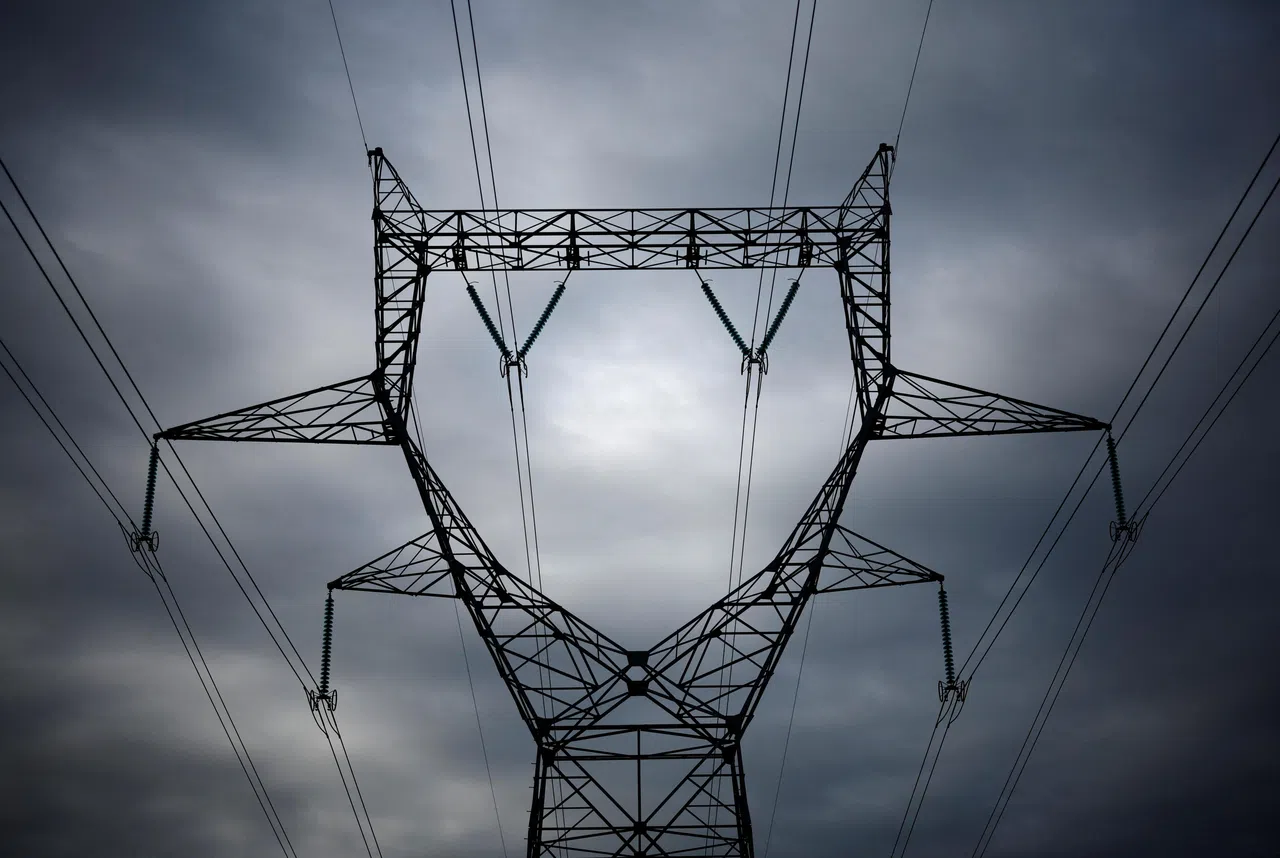IMAGINE being paid hundreds of dollars a day just to tweak your energy consumption – using less electricity at night and more during the day. For a casting and smelting company in Shanxi province, this idea became reality.
By joining a virtual power plant (VPP) network, the company raked in a cumulative 1.4 million yuan (S$258,896) over the past year, earning about 4,000 yuan a day while cutting its annual electricity bill by four million yuan.
This is the power of VPPs, which promise to reshape China’s energy market by grouping together decentralised resources and promoting sustainable practices.
Unlike traditional power plants, VPPs do not generate electricity or require physical infrastructure. Instead, they rely on Internet technologies to manage and optimise power loads from resources such as energy storage, air conditioning, lighting and electric vehicle (EV) charging stations. These resources are then used to help balance supply and demand.
For the grid, VPPs function much like traditional power plants, ensuring a stable balance between electricity supply and demand.
As new energy sources such as solar and wind power become more integrated into China’s energy mix, managing their inherent volatility presents a challenge. VPPs tackle this by tapping into those user-side resources to smooth out demand peaks, promoting a more consistent usage of renewable energy during off-peak hours.
A NEWSLETTER FOR YOU
Friday, 12.30 pm
ESG Insights
An exclusive weekly report on the latest environmental, social and governance issues.
The rise of VPPs has caught the attention of investors. Since the start of this year, VPP-related stocks have surged. Shares of Shenzhen Auto Electric Power Plant, an automatic power supply equipment manufacturer, smart meter maker SMS Electric Zhengzhou and electricity distribution equipment manufacturer Beijing Creative Distribution Automation have skyrocketed thanks to their involvement in VPP technologies. This trend is also fuelling investment in industrial software projects that feature VPPs as key components, with investors viewing these projects as the future of the energy industry.
National policies are also propelling the growth of VPPs. In August, China’s National Development and Reform Commission unveiled a plan to accelerate the development of a new power system, positioning VPPs as vital to achieve carbon neutrality. This plan aims to establish technical standards to ensure the safe operation of VPPs and their seamless integration into the national grid.
Interest is growing
“We definitely feel that more investors are interested in virtual power plants this year,” said Niu Lei, general manager of digital energy at EV charging station company Star Charge. As more players enter this sector, these asset-light energy models are being seen as the next “unicorn” in the energy market.
Global tech giants are also betting on VPPs. Jensen Huang, chief executive of Nvidia, predicted in June that artificial intelligence’s (AI) most lucrative application may be in smart grids. Nvidia is developing smart meters to create an “energy store” model, allowing customers to sell excess electricity stored in home batteries or EVs to their neighbours.
Unlike traditional grids that transmit electricity one way from power plants to consumers, VPPs rely on two-way transmission. They tap into a growing pool of decentralised energy sources such as wind, solar and battery storage, to balance supply and demand in real time. As more companies develop VPP technologies, the market is expected to skyrocket, with Huatai Securities estimating it will reach 10.2 billion yuan by 2025 and 100 billion yuan by 2030.
VPP projects are taking off across China, with recent launches in Chengdu, Qingdao, Chongqing and Shenzhen. These city-level VPP projects aggregate resources from 150,000 to 400,000 kilowatts (kW), the equivalent output of a small to midsize power plant. Shenzhen leads the charge, with 3.1 million kW of adjustable load, the same capacity as three large thermal power units.
Shenzhen is also a model for government-led VPP development, offering subsidies to encourage participation. In 2023, the city allocated 4.5 million yuan in subsidies, a figure expected to grow to 14 million yuan this year. These funds help businesses offset the cost of shifting energy consumption in line with grid demands.
Over time, Shenzhen is expected to replace this government support with a market-driven VPP model, said Yu Qing, an executive at an Internet energy company.
VPP development typically follows three stages. In the first, grid operators manage VPPs to ensure grid stability, with profits driven mainly by government subsidies. In the second stage, VPPs start to interact with the wider electricity market but still rely on subsidies. In the final stage, VPPs engage in energy trading in a fully open, market-based system where they capitalise on price fluctuations and make frequent trades.
Shanxi’s VPPs already participate in power spot trading, while other regions, including Shandong and Guangdong provinces, are rapidly following suit. As the power market evolves, VPP operators could soon be trading energy resources on a daily basis, earning revenue through market-based deals rather than relying solely on subsidies.
With China’s VPP market still in its early stages, the opportunities for growth are immense. Players from diverse sectors – energy companies, tech firms and even carmakers – are jumping into the field.
But can VPPs be profitable?
Shanxi Fangxing Measurement and Control is a pioneer in China’s VPP sector, managing a capacity of 240,000 kW and bringing together users consuming 1.5 billion kilowatt-hours (kWh) annually. Despite these impressive figures, end users earn just 0.01 yuan per kWh, highlighting the challenge in making VPPs profitable.
Though Shanxi’s power spot market officially launched in late 2023, only four VPPs have entered, and most are struggling to maintain consistent revenue. Across China, VPPs heavily rely on government subsidies, but even with this support, most are barely covering costs.
In Shenzhen, for example, the city is providing 14 million yuan in subsidies this year, but with more than 30 VPP operators competing, each can expect to earn less than 500,000 yuan in 2024 – barely enough to cover the cost of installing the necessary digital infrastructure such as controllers and data systems, Yu said.
Larger, established companies fare better, leveraging their existing energy storage and charging station businesses to benefit from early investments. However, startups – without established infrastructures or customer bases – struggle to gain a foothold, Yu added.
Another challenge for VPPs is navigating the complex relationship between grid dispatching departments and the market. Grid dispatchers, as the main buyers of power generated from all sources, still hold significant control over the power system, limiting how often VPPs can operate.
Although VPPs offer lower operational costs compared with traditional power plants, they struggle to compete for selling opportunities due to entrenched mechanisms that favour established players such as thermal and hydropower plants, Yu pointed out.
The profitability of VPPs is further strained by pricing pressures. The grid often sets lower prices for VPPs to sell power; and without open bidding or transparent pricing, operators struggle to secure competitive rates.
Experts are calling for reforms to define VPPs’ market role, establish clear rights and ensure fair competition with traditional power sources.
To address these challenges, China has introduced new national standards, due to take effect in February 2025. They are designed to provide guidelines for the management, allocation and evaluation of VPPs.
However, many VPPs still lack the tools to effectively compete on an equal footing with traditional power plants, said Nan Dou, director of Shanxi Fengxing’s VPP business.
One of the core capabilities of VPPs lies in user aggregation, Nan pointed out. Operators must find ways to efficiently aggregate users while keeping costs low, said Niu at Star Charge. Technologically, VPP platforms need to become more adaptable, allowing them to function across various provincial rules and market mechanisms, Niu added.
Looking ahead, industry experts suggest that VPPs could play a greater role in balancing local power grids. Currently, dispatching typically occurs at the provincial level, meaning VPPs are often too slow to step in to relieve local power usage peaks.
A shift towards a “bottom-up” model, where microgrids made up of energy storage, solar panels and EV chargers can better manage local supply and demand, could open new opportunities for VPP operators, Yu said.
Educating users
“Those who win the users win the world.” This mantra echoes across China’s VPP industry, where success hinges on integrating energy users into the market. Despite the promise of VPPs, the sector still faces the challenge of effectively engaging user-side resources.
The concept of allowing users to participate directly in the energy market was first introduced in China’s 2015 electricity reform.
Despite the intention of the reform, most users remain passive recipients of power, with little understanding of the benefits of market engagement. VPP operators spend much of their time educating users on the advantages of participating in VPP networks, said Gao Chi, China project researcher at energy policy think tank Regulatory Assistance Project.
Yet convincing users to get involved is not easy. Many businesses see electricity as a fixed cost and are resistant to change.
Even with financial incentives, companies hesitate to join VPP networks, fearing disruptions to production. A procurement officer from a polysilicon smelting company noted that the savings from pausing production for an hour barely dented its overall electricity bill.
Xu Ming, BASF China’s power and renewable energy purchasing manager, explained that industrial users are primarily focused on maintaining continuous production.
While they are open to the idea of energy optimisation, they require customised solutions that account for their specific production needs. BASF, for instance, participates in VPP networks to maximis the use of renewable energy and reduce electricity costs without sacrificing safety.
BASF’s European operations offer a glimpse into the potential of VPPs. Since 2009, the company has used its own generators in Germany to provide frequency containment reserves, reducing ancillary service costs by 70 per cent between 2009 and 2015. This strategy also allowed BASF to shift production to periods of cheaper electricity.
In China, BASF joined the Shanghai VPP in July 2023 and has been actively participating in peak regulation during periods of high demand. While China’s electricity market is still evolving, better price signallng and market transparency will encourage more users to actively participate in VPP networks, Xu said.
Yu agreed that the spot market’s growing use will spur user participation. As energy prices fluctuate more with the rise of renewables, businesses will be forced to adjust their consumption habits, leading to broader VPP adoption. CAIXIN GLOBAL



